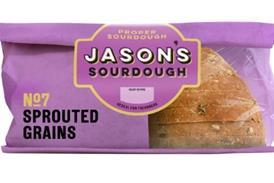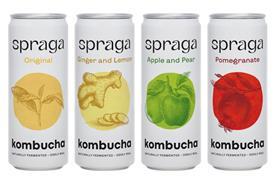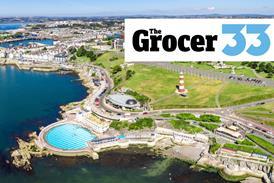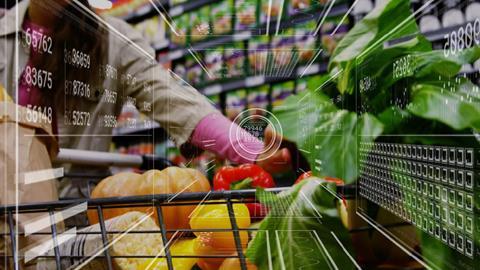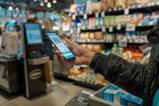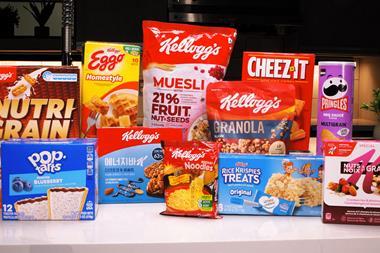Between weak demand, surging costs, onerous regulation and new tariffs – the size and permanence of which are still uncertain – grocers and their suppliers are facing an extraordinary level of disruption, and ‘business as usual’ is no longer an option.
In the coming years, profitable growth will be hard to come by without business model and cost base transformation.
However, here’s the good news: capital infusion isn’t the only answer. There are two strategic perspectives that can move the needle for any company. The first is making economic profit the North Star. The second is taking an end-to-end view of every opportunity. In our experience, these disciplines are what separate the leaders from the followers.
When companies use these lenses to examine potential solutions to their business challenges, they can make better decisions and execute them more effectively. Consider the following scenarios.
Scenario 1: Addressing declining grocery volumes
A grocer has a volume problem. Recent declines have reversed the virtuous cycle of unit productivity improvement that funds customer proposition development and pricing. The grocer needs to decrease costs and channel the savings towards reinvigorating the proposition and returning to volume growth.
The options
If capital is readily available, the grocer could consider options like revamping its network strategy to get fixed cost ratios back on track; reconfiguring warehouses or subleasing space; or adding automation for improving planning and forecasting or case productivity.
If capital is constrained, the grocer could explore outsourcing capacity to a third-party logistics provider, with capital requirements funded externally and then amortised accordingly; “variable-ising” certain fixed/semi-fixed costs (e.g., with more flexible labour contracts or more advanced labour planning); or conducting range rationalization or channel optimisation. The grocer could also explore how suppliers could help, whether with minimum order quantities, lead times, or consignment stock models.
The process
To have an apples-to-apples view of which action will produce the highest return, the grocer should use economic profit as its most important metric. Fully allocated cost and margin models at the site, channel, supplier and SKU levels will play a key role here because, particularly in the case of volume decline, these more granular views of profitability will show whether country strategies, channel strategies and store strategies are delivering as expected or need to be revisited.
To ensure clarity about the priority and process changes needed for each option, the grocer should take an end-to-end perspective. Companies often don’t realise the degree to which an initiative launched in one part of the business impacts others. For example, we observed one grocer where 60% of labour costs in store were driven by decisions made elsewhere in the company.
The alternative
The grocer that opts not to apply the lenses of economic profit and end-to-end perspective will make decisions based on incomplete information. If it uses traditional metrics as it compares options, it will underestimate the costs required. If the grocer fails to account for the full scope of customer, financial and operational realities across the whole business, it will encounter unintended consequences that keep the project from reaching its projected potential.

Scenario 2: Navigating market share loss amid rising private label competition
A brand realises it is losing market share in a key category. Accustomed to having leverage with retailers and funneling its higher margins into R&D, the brand has long dominated the “Better” and “Best” parts of the range – but now premium private labels present an increasing challenge.
The brand decides to evaluate ways to increase innovation and promotions. It knows it should also take steps to reinforce its core proposition, collaborate up and down the value chain, and create independence through diversification and further distinguishing itself with customers.
The options
If capital is readily available, the brand might consider new packaging and ingredient formats, adjacent products, or market rebrands paired with innovative promotions. It could make its manufacturing and distribution network more efficient, or it could explore direct-to-consumer.
If capital is constrained, the brand might reassess the target customer; narrow the focus of its marketing; pivot campaigns to favourably contrast its products with private label; or partner more closely with retailers on the role of the brand.
The process
To select the path forward that will create the most value for the overall company, the brand should commit to economic profit as its most important metric. Because decisions in scenarios like these tend to be emotionally charged — with egos, reputations and even jobs on the line — having a single, impartial standard by which to judge all options is essential.
To fully understand the feasibility and desirability of each alternative, the brand should take a total end-to-end view of the business. In this instance, the brand must consider how the processes required for each option would ripple through the whole business: the demands of fast-tracked development cycles, the additional manufacturing and storage costs, the diversion of management time, the impact of any new products or promotions on the legacy portfolio, the effects on retailer relationships, and more.
The alternative
The brand that declines to use the lenses of economic profit and an end-to-end perspective as part of its decision-making process is leaving growth on the table. If it doesn’t embrace economic profit as its standard, the work it puts toward the chosen option won’t achieve as much as the same work could have if directed toward a more profitable alternative. If the brand doesn’t take an end-to-end view of the business, it will miss the opportunity to circumvent or mitigate potential issues on the front end and instead will be saddled with challenges that hinder progress and limit results.
Time for transformation
Capital is expensive, economic pressure is rampant, and the global trade system is volatile. None of this should stop grocers and their suppliers from making the investments they believe will allow them to thrive rather than just survive in the coming years.
Sitting tight and waiting for a more favourable environment might sound like a safer option but delay only adds more risk. Finding solutions which consistently satisfy customers and also drive economic profit will take your business forward.
At AlixPartners, we specialise in these situations, when everything is on the line – when it really matters. Our team has deep operational experience in improving economic profit and end-to-end speed to results with both consumer brands and retailers. Contact us to start a conversation.
To find out more, contact us to start the conversation.


